12 Tile Removal Tools for an Efficient Job Well Done
Author: Chris Miller | Editor: Omar Alonso
Review & Research: Jen Worst & Chris Miller
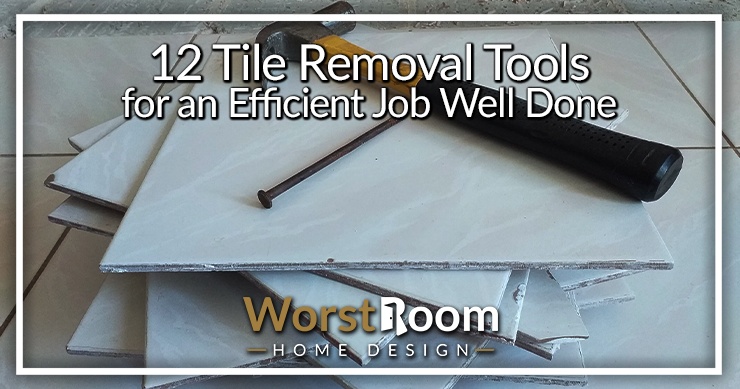
If your tiles have become sticky, slippery, chipped, or damaged, these are signs that it's time to get your hands on some tile removal tools and get ready to replace those tiles
Purchasing new replacement tiles is in itself going to cost you a pretty penny, but what can be even more expensive is paying a professional to remove your old tiles and lay out the new ones. Might as well own the tools forever and learn a new skill.
12 Tile Removal Tools
This is where removing your own tiles comes in handy. Though it can be a little back-breaking, it’s simple enough, and it’ll save you quite a bit of your hard-earned money.
To help you get the job done, you’re going to need the right tools, so here’s a list of the different types of tile removal tools to keep handy for your DIY project. And when you're ready, let us help you choose which types of tile you want to install next.
Hammers

Let’s start with the most basic tool—hammers. A staple across toolboxes around the world, the chances are that you probably own one already, but if you don’t, investing in this inexpensive, multipurpose implement is completely worth it.
While a hammer isn’t a perfect replacement for proper demolishing tools, it can still get the job done quite well, easily breaking up tiles into smaller pieces for removal and prying thanks to the claw and handle which give you leverage. There's so many useful parts of a hammer for removing tile.
For more efficiency, consider getting either a mallet hammer or a claw hammer. The former is preferred because you can also use it with a chisel to prise out your tiles and the accuracy afforded by the hammer is higher, thanks to a larger surface area.
Claw hammers require more care while using, but can also work as tools to remove tiles from walls, floors, shower surrounds, and any where else you may have them. You don't even have to add tile back. You can check out these shower tile alternatives for more ideas.
All in all, hammers are a great budget option to consider. You’re not just going to have a specialist tool that you keep locked away for much of the year; you can use these in an array of garden and home projects, so you’ll be getting more than enough returns on your investment.
Masonry Chisels
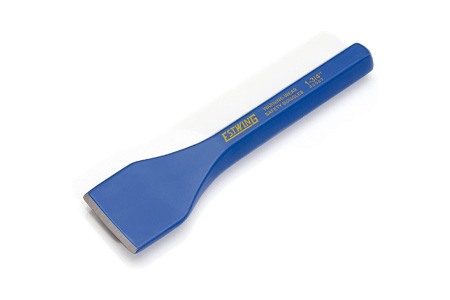
Masonry chisels are a godsend for stubborn tile pieces that refuse to budge, especially the hard-to-handle ones in the corners. With a chisel and a mallet hammer (as mentioned earlier), you can easily pry out and lift corner tiles and also remove any stubborn grout from the floor.
If you’re buying masonry types of chisels (or any, for that matter), it’s highly recommended that you also buy a mallet hammer with it to extract the best use and functionality—you just need to place the pointed end of the chisel where the tile meets the ground and drive it in with the mallet hammer to easily get under the tile and lift it out.
With this power duo, you can easily remove tiles and grout from the entire bathroom floor (though it will take you a bit of time). Like a floor scraper, these are some of the best tools for tile removal as they can just scoot under and against tile and grout and make quick work of them.
I knew a guy who painted his bathroom tile, decided against it, and had the entire bathroom stripped of tile with one of these in a few hours of aggressive work. Knowing how to tile inside corners is one thing, but removing them is a piece of cake with a chisel.
Masonry chisels come in various sizes, but the size really doesn’t matter so much for tile and grout removal. You’re also going to be working on your hands and knees regardless of which chisel you buy, especially if you're looking for floor tile removing tools, so picking out a chisel comes down to a matter of preference.
Floor Scrapers
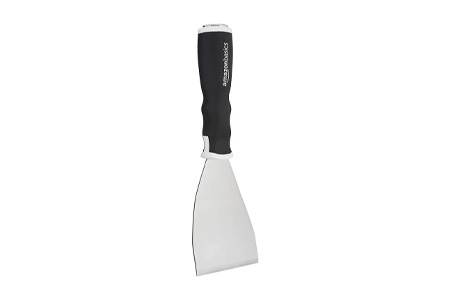
While hammers may be good enough, a floor scraper is one of the very first implements you may want to consider if you’re looking for specialized tile removal tools.
These tools work just as their names suggest—they’re engineered to scrape the floor with their flat, thin, angled edges so that you can easily get under the tile and lift it. These are among the best tools for removing tile in terms of effectiveness and speed of getting the job done.
Though you may be able to pull up all the tiles on the floor in certain cases with just a floor scraper and no power tools, these hand tools work best on tiles that aren’t too tightly stuck to the wall or floor.
They’re also quite effective at scraping off grout and other lumps from the surface—this helps smoothen the surface so that it’s even for your new tiles.
Also referred to as bully tools, floor scrapers are all kinds of efficient and affordable. If you prefer standing up and working over getting down on your hands and knees, pick out a scraper that’s longer.
Pry Bars
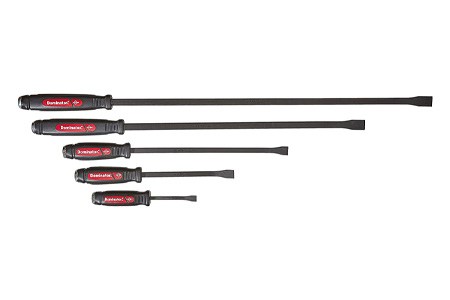
Similar to floor scrapers but not as “specialist”, pry bars have an angled edge or “foot” on one end, which can be slid under the tile’s edge to forcefully pry it up. These tools can also be used with mallet hammers as a replacement for chisels.
Pry bars have a sturdy, durable build thanks to a chunky steel body and design. They’re quite versatile and can be used efficiently in a range of home projects including as tools to remove ceramic tile, and are inexpensive to boot.
Demolition Forks
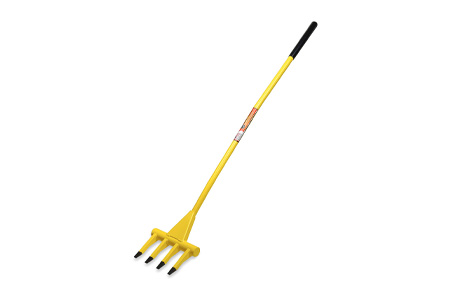
If you don’t want to settle for a pry bar, you might want to consider a demolition fork. Though it looks quite similar, it has a fork on its end instead of a foot, which can be inserted under the tile to pry it up, with a little help from the pressure applied to the handle.
If you’ve got the muscles and tenacity for it, you could easily de-tile your entire bathroom with just a demolition fork alone. Like pry bars, demolition forks are also multipurpose; you can use them to detach any fixtures or tear down walls, especially drywall.
Since demolition forks call for quite a bit of manual labor, you’ll want to pick a size that ensures minimum back and shoulder pain while ensuring maximum results. Demolition forks are entirely composed of steel, so they’ll last you for quite a while, especially if you only use them as tile removal tool types and not for more heavy duty work.
Air Hammers
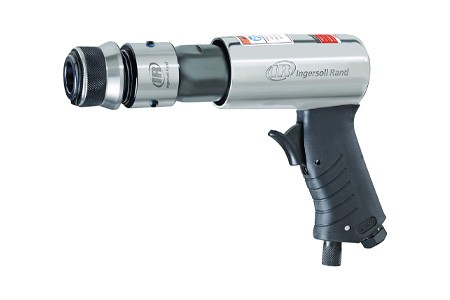
Among the most favored demolition tools, air hammers work on the pneumatic system, meaning that they use pressurized air to swing back and forth (instead of you having to manually swing them) and break something down, even in those hard-to-reach corners. These hammers can produce a whopping 5,000 swings each second.
You can also make your air hammer multipurpose by affixing a chisel head onto it to quickly and efficiently remove grout or break down tiles (though you’ll be saving time and effort, note that there may be some compromise on the accuracy).
Air hammers are quite straightforward to use and also quite light, so you don’t have to worry about exerting yourself too much, but as tile removal tools they're going to end up destroying your tiles, rendering them unusable if needed.
Sledgehammers
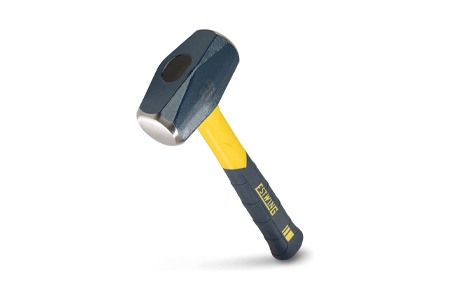
If you want to bring in the heavyweights for your tile removing, look no further than a sledgehammer! These massive manual implements can make quick work of breaking down even solid walls and surfaces, so tiles are a breeze in comparison.
However, a sledgehammer is ideal only if you have a lot of space to work in (the hammer is quite long and you’ll have to swing it quite wide for sufficient force) and if you want to break up and remove the tiles from the entire space.
Additionally, you’ll have to take care not to mistakenly hit objects or surfaces around you; given the weight and strength of a sledgehammer, damaging is quite easy. Sledgehammers come in various sizes, so be prepared for a heavy back and upper body workout if you end up buying a heavier, bigger one.
Jackhammers
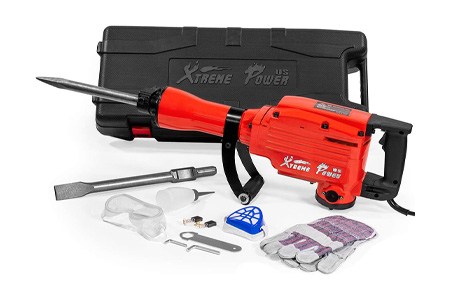
Similar to air hammers but bigger and twice as powerful, jackhammers are a great idea for tile removal in spacious areas. This is a power tool, so there is a bit of a learning curve to be able to handle it properly. Therefore, it is usually recommended for professionals or those with experience.
Use them wrong and you can end up damaging the stability and strength of the ground beneath the tiling. Additionally, they’re quite expensive to lease or buy, and may not be ideal in all tile removal situations—they’re great for quickly and easily removing tiles from large areas as well as for digging up surfaces.
Grout Removal Tools
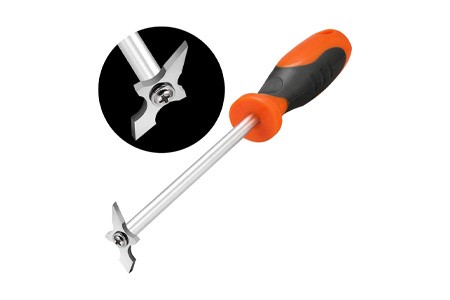
It’s not just removing tiles that you need to worry about in a tile removal project—you’ll also need to tackle the grout. This is where grout removal tools come in handy. These are types of tools specifically designed for a precise task like removing grout off the floors.
Grout removal tools can be manual or electric. Manual tools, resembling large screwdrivers, are more time and effort consuming, but you can control them better and be more accurate. A power grout removal tool is more powerful, quicker, and involves less effort.
Additionally, power grout removers can be multi-tools; you can use them to sand surfaces or cut them. However, they can be quite expensive and may be harder to control as tile removal tools.
Drill & Tile Drill Bit
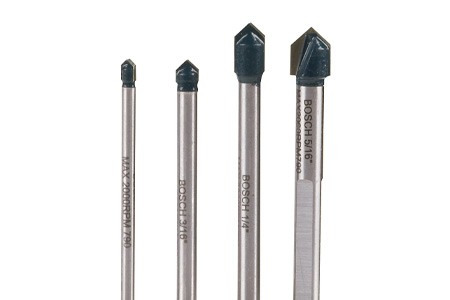
A great way to break up a really stubborn tile is to bore holes into it or the surrounding grout and then use tools to lift the tile through these holes. A drill and tile drill bit will help you achieve this. Different materials warrant different drill bits.
Drill and tile drill bits are generally the go-to only when every other tile removal tool options have been exhausted.
Trim Puller
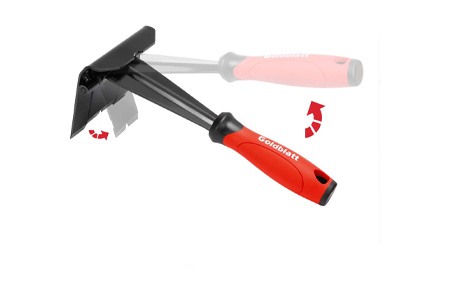
One thing you may not consider, especially if you're dealing with tiles on the floor, is a trim puller. You'll have to remove the trim from the wall so that you can set the tile beneath it before replacing the trim.
The easiest way to do this without breaking anything is to use one of these trim pulling hand tools. They're perfect for baseboards, crown molding, door frames, and any other decorative framing or panels.
Safety Gear
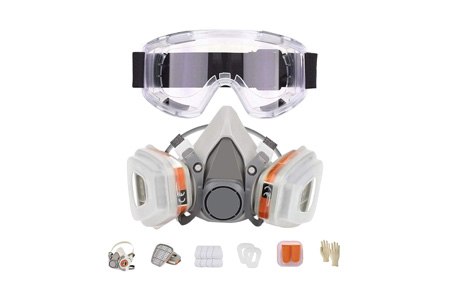
As with any power tools and working with material that can kick up a fine dust, you'll want to have various types of protection on hand. Consider gloves, safety goggles for eye protection, ear plugs or ear muffs for hearing protection, and especially some kind of mask to keep you from breathing in grout dust.
One note is that if you're removing tile to install vinyl flooring, you don't have to! You can install vinyl flooring directly over tile. You can install a tub surround over tile as well. So don't go into demolition mode unless you're sure you have to. It'll save you a lot of time and money.
Tile Removal Tool Types to Get the Job Done
Though these tools will go a long way in helping you remove your tools, other accessories such as wheelbarrows and vacuums will also aid the process. Additionally, always ensure you’re sufficiently outfitted in safety equipment, such as gloves, masks, safety goggles, and noise-canceling headphones (especially for power tools).
With all these types of tile removal tools in your arsenal, you’re more than ready to tackle your tile job head-on.



